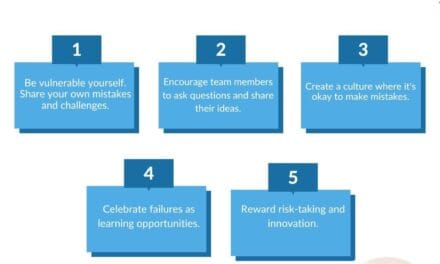Navigating personal challenges as a technology leader through coaching is increasingly recognized as a vital strategy for success in today's fast-paced business landscape. In an era marked by rapid technological advancement and constant change, technology leaders face unique pressures that can impact their effectiveness and well-being. The demands of leading diverse teams, driving innovation, and making high-stakes decisions can sometimes lead to feelings of isolation, stress, and self-doubt. With such burdens at hand, many leaders are discovering that coaching provides a structured and supportive framework to tackle these challenges head-on. By engaging with a coach, technology leaders can enhance their self-awareness, develop vital skills, and cultivate resilience, ultimately empowering them to thrive in their roles. In this blog post, we'll explore the critical role of coaching in helping tech leaders navigate their personal challenges and achieve sustainable growth.
Understanding the Role of a Technology Leader
Technology leaders have a unique position that demands a balance between technical expertise and strategic vision. Given the rapid pace of innovation and change in the industry, technology leaders must navigate a multitude of personal and professional challenges. These can include:
Rapidly evolving technologies and best practices
Scaling teams and managing diverse talent
Ensuring alignment between technology initiatives and business goals
Managing stress and maintaining mental well-being
Common Personal Challenges Faced by Tech Leaders
In their roles, technology leaders often confront specific personal challenges, such as:
Imposter Syndrome: Doubting one's capabilities, despite evidence of success.
Work-life Balance: Struggling to maintain equilibrium between personal life and professional responsibilities.
Burnout: The risk of mental and physical exhaustion due to prolonged stress and overwork.
Conflict Management: Navigating conflicts within teams or with stakeholders effectively.
The Importance of Coaching for Tech Leaders
Coaching serves as a powerful tool for technology leaders striving to overcome their personal challenges. It provides a structured method to explore and address these issues while fostering growth and resilience.
How Coaching Addresses Personal and Professional Challenges
Coaching helps technology leaders in several impactful ways:
Personal Insight: Gaining a deeper understanding of one’s leadership style and its impact on others.
Setting Goals: Establishing clear personal and professional goals to create a roadmap for success.
Skill Development: Learning to develop essential skills such as emotional intelligence, communication, and conflict resolution.
Different Coaching Methodologies for Diverse Leadership Styles
Technology leaders may benefit from various coaching methodologies, including:
Executive Coaching: Focused on personal leadership development and decision-making skills.
Group Coaching: Facilitating shared learning experiences among peers facing similar challenges.
Peer Coaching: Encouraging mutual support and accountability among fellow leaders.
Navigating Personal Challenges as a Technology Leader Through Coaching
By actively engaging in coaching, technology leaders can effectively navigate personal challenges and develop strategies tailored to their unique situations. This journey involves:
Identifying Challenges: Acknowledging and articulating specific personal obstacles.
Collaborative Problem Solving: Working with a coach to devise actionable solutions.
Commitment to Change: Actively pursuing growth and transformation through sustained effort and reflection.
For technology leaders considering coaching, the International Coach Federation (ICF) provides valuable resources and guidelines to help select the right coach for your needs. Visit ICF for more information.
By leveraging coaching, technology leaders can enhance their effectiveness and resilience, ultimately driving success for both themselves and their organizations.
Building Emotional Resilience
Emotional resilience is a crucial quality for technology leaders who face high-pressure situations and rapid changes. The ability to bounce back from setbacks and maintain a positive outlook greatly influences both personal well-being and team morale.
The Impact of Stress on Decision-Making and Leadership
Technology leaders often operate under significant stress, and this can adversely affect their decision-making capabilities. Stress can lead to:
Reduced Cognitive Function: Impairing the ability to think clearly and make informed decisions.
Increased Conflict: Heightening tensions within teams and affecting collaboration.
Decreased Innovation: Stifling creativity and the willingness to take calculated risks.
Techniques for Enhancing Emotional Intelligence Through Coaching
Coaching can enhance emotional resilience by promoting emotional intelligence through various techniques, such as:
Self-Awareness: Understanding one's emotions and how they affect behavior and decision-making.
Mindfulness Practices: Techniques to focus on the present moment and reduce anxiety.
Feedback Mechanisms: Regularly seeking and receiving feedback to improve interpersonal skills and emotional responses.
Stress Management Techniques: Learning effective strategies for managing stress, including problem-solving and time management skills.
Creating a Supportive Environment
A supportive culture within a tech organization can significantly aid in navigating personal challenges. Establishing a coaching culture not only benefits individual leaders but also uplifts the entire organization.
Importance of a Coaching Culture in Tech Organizations
A coaching culture encourages open communication and promotes personal growth, creating a more engaged and motivated workforce. Key benefits include:
Improved Performance: Enhanced individual and team performance drives organizational success.
Increased Retention Rates: Employees who feel supported are more likely to stay with the company.
Enhanced Collaboration: A culture of coaching fosters teamwork and shared learning.
Engaging with Coaches and Mentors to Foster Growth
Encouraging leaders to engage with experienced coaches and mentors can provide invaluable support:
Tailored Guidance: Personalized coaching sessions that address specific challenges.
Networking Opportunities: Connecting with other professionals for shared insights and strategies.
Long-Term Development: Ongoing support that facilitates continuous improvement and resilience.
Navigating personal challenges as a technology leader through coaching can ultimately pave the way for a more balanced and effective leadership journey. Investing in emotional resilience not only enhances personal and professional outcomes but also fosters a thriving organizational environment.
Measuring the Impact of Coaching
Understanding the effectiveness of coaching is essential for technology leaders aiming to navigate personal challenges. By measuring the impact of coaching, leaders can gain insights into their development and reinforce the value it brings to their roles.
Key Performance Indicators for Personal Development
To assess the effectiveness of coaching, technology leaders should consider the following performance indicators:
Goal Achievement: Tracking progress on personal and professional goals set during coaching sessions.
Feedback from Peers and Employees: Gathering insights from colleagues to evaluate changes in leadership style and team dynamics.
Resilience Metrics: Analyzing stress levels and emotional well-being before and after the coaching experience.
Team Performance Metrics: Observing improvements in team performance and collaboration as a result of enhanced leadership.
Evaluating the ROI of Coaching for Technology Leaders
Assessing the return on investment (ROI) for coaching experiences can be done through qualitative and quantitative measures:
Financial Indicators:
Increases in productivity or sales attributed to improved leadership.
Reduction in turnover rates, leading to lower hiring costs.
Employee Engagement Scores:
Monitoring engagement levels pre- and post-coaching to understand the impact on team morale.
Individual Growth:
Noting improvements in specific skills such as decision-making, communication, and emotional intelligence.
Exploring resources from established organizations can offer further insights into measuring coaching effectiveness. The Society for Human Resource Management (SHRM) provides valuable guidelines on assessing training and development initiatives. Visit SHRM for more information.
Navigating personal challenges as a technology leader through coaching is a journey that involves careful evaluation of outcomes. By systematically measuring the impact of coaching, leaders can refine their approach and foster a culture of growth and development within their teams.
Conclusion
Navigating personal challenges as a technology leader through coaching is not just beneficial; it is essential in today's fast-paced and ever-evolving tech landscape. Effective coaching offers leaders the tools and support needed to overcome obstacles while enhancing their overall effectiveness.
Summary of the Benefits of Navigating Personal Challenges Through Coaching
The advantages of engaging in coaching include:
Personal Growth: Enhanced self-awareness and emotional intelligence lead to better leadership practices.
Improved Decision-Making: A clearer understanding of one's strengths and weaknesses contributes to more informed choices.
Stronger Teams: Coaching fosters healthier team dynamics and communication, leading to higher performance levels.
Organizational Success: As technology leaders grow, their organizations benefit from increased productivity and innovation.
Encouragement to Seek Coaching Support as a Technology Leader
For technology leaders facing challenges in their roles, seeking coaching support can be a transformative step. By investing in personal development, leaders can not only address their immediate challenges but also cultivate a sustainable approach to long-term growth and resilience. With the right coaching partnership, leaders can confidently navigate the complexities of their positions while driving their teams toward success.
To explore your coaching options and find resources tailored to your needs, consider visiting the International Coach Federation (ICF), which provides a wealth of information on professional coaching standards and practices. Visit ICF for more information.
Creating a Supportive Environment
A supportive environment is crucial for technology leaders seeking to effectively navigate personal challenges. Fostering a culture of coaching within organizations not only aids individual leaders but also promotes collective growth and success.
Importance of a Coaching Culture in Tech Organizations
Embracing a coaching culture can significantly enhance team performance and employee satisfaction. Here are the key benefits of creating such an environment:
Encouraging Continuous Learning: A culture of coaching promotes ongoing development and skill acquisition, empowering employees to take ownership of their growth.
Building Trust and Collaboration: Openness and feedback embedded in coaching practices foster trust among team members, enhancing collaboration and teamwork.
Increasing Employee Engagement: When leaders actively support and invest in their teams, it leads to higher levels of engagement and retention.
Engaging with Coaches and Mentors to Foster Growth
To establish a thriving coaching culture, organizations can implement various strategies to encourage leaders to engage with coaches and mentors:
Provide Access to Coaching Resources:
Offer workshops, seminars, and access to certified coaches to introduce leadership and coaching concepts.
Establish Mentorship Programs:
Pair emerging leaders with experienced mentors who can provide guidance, support, and feedback.
Encourage Peer Coaching:
Create opportunities for informal coaching relationships among peers, fostering a collaborative environment where leaders can learn from one another.
Recognition and Rewards:
Recognize and reward leaders who actively engage in coaching and mentorship, reinforcing the importance of these practices across the organization.
By prioritizing a supportive environment, organizations empower their technology leaders to successfully navigate personal challenges as a technology leader through coaching, ultimately benefiting both individual and organizational success. For further insights into building a coaching culture, organizations can refer to resources from major consultancies such as McKinsey & Company. Visit McKinsey for more information.
Identifying Personal Challenges Unique to Technology Leadership
Navigating personal challenges as a technology leader through coaching begins with recognizing the specific obstacles that arise in this role. Technology leadership comes with unique pressures and demands that can greatly impact a leader's effectiveness and overall well-being.
Common Personal Challenges Faced by Technology Leaders
Understanding these challenges is essential for leveraging coaching effectively. Here are some common personal challenges that technology leaders may face:
Imposter Syndrome: Many leaders question their abilities, feeling undeserving of their position despite tangible successes.
Isolation: The fast-paced and competitive nature of the tech industry can leave leaders feeling alone, disconnected from their teams and peers.
Work-Life Balance: Managing the demands of leadership while maintaining personal life can lead to stress and burnout.
Constant Change: Rapid technological advancements require leaders to continuously adapt, which can be overwhelming.
Decision Fatigue: The necessity of making numerous critical decisions can lead to exhaustion and diminished performance over time.
Addressing These Challenges Through Coaching
Coaching provides a structured space to explore and address these unique challenges:
Self-Reflection: Coaches facilitate self-reflection, helping leaders to recognize and articulate their thoughts and feelings regarding their experiences.
Personalized Strategies: Coaches tailor strategies to each leader's circumstances, enabling them to develop coping mechanisms and resilience.
Goal Setting: Coaching encourages leaders to define clear, achievable goals that address their challenges, creating a sense of direction and purpose.
Developing a robust understanding of the challenges inherent in technology leadership is crucial for effectively navigating personal obstacles. By embracing coaching, leaders can gain valuable insights and strategies that foster growth and resilience. For in-depth resources on leadership challenges in technology, check out articles and studies published by Harvard Business Review. Visit HBR for more information.
The Coaching Process: Steps to Address and Overcome Challenges
To effectively navigate personal challenges as a technology leader through coaching, it's important to understand the coaching process. This structured approach helps leaders systematically identify and tackle their obstacles, ultimately fostering growth and resilience.
Key Steps in the Coaching Process
Initial Assessment:
The coaching journey typically begins with an initial assessment where the coach and leader discuss specific challenges, goals, and expectations. This helps establish a baseline for future progress.
Goal Setting:
Based on the assessment, the coach and leader collaboratively set clear, measurable goals. This ensures that both parties are aligned and provides a roadmap for the coaching journey.
Action Planning:
Together, they create an action plan detailing the steps needed to achieve the set goals. This plan serves as a guide, outlining specific actions, timelines, and resources required.
Regular Check-Ins:
Commitment to regular check-ins or sessions allows for ongoing support and accountability. During these meetings, leaders can discuss their progress, challenges faced, and any adjustments needed to their action plan.
Reflective Practice:
Coaches encourage reflective practice, prompting leaders to analyze their experiences, behaviors, and adjustments made along the way. Reflection is key to personal growth, allowing leaders to gain insights and develop resilience.
Measuring Progress:
Throughout the coaching process, it’s essential to measure progress against the initial goals. Coaches help leaders evaluate successes and setbacks, fostering a deeper understanding of their development.
Continuous Development:
Finally, the coaching process emphasizes the importance of continuous development even after achieving initial goals. Leaders are encouraged to seek out new challenges and opportunities for growth, ensuring they remain adaptable in a rapidly changing landscape.
Navigating personal challenges as a technology leader through coaching provides a structured method for personal and professional growth. By engaging with a coach and following this process, technology leaders can confidently face their challenges and drive their success.
For more insights on effective coaching practices, consider exploring resources from Deloitte, a leading professional services firm. Visit Deloitte for more information.
What are the common challenges technology leaders face?
Technology leaders often experience challenges such as imposter syndrome, burnout, work-life balance issues, isolation, and the pressure of constant change in the industry. These challenges can affect their decision-making abilities, team dynamics, and overall job satisfaction.
How does coaching benefit technology leaders?
Coaching benefits technology leaders by providing personalized support, enhancing self-awareness, and promoting skill development. It helps them set clear goals, develop actionable plans, and gain insights into their leadership style, ultimately leading to improved performance and resilience.
What types of coaching are available for technology leaders?
Various coaching options are available, including executive coaching, group coaching, and peer coaching. Each type can be tailored to meet the specific needs and preferences of technology leaders, focusing on individual development, team dynamics, or collaborative learning.
How long does the coaching process typically take?
The duration of the coaching process can vary based on individual needs, goals, and the coaching relationship. Generally, coaching engagements can last from a few months to a year, with regular sessions scheduled to monitor progress and make necessary adjustments along the way.
How can organizations foster a coaching culture?
Organizations can foster a coaching culture by providing access to coaching resources, establishing mentorship programs, encouraging peer coaching, and recognizing leaders who actively engage in coaching. Leadership buy-in and commitment to professional development are also crucial for creating an environment conducive to coaching.





